|
Jaguar Search in
Belize |
|
8-12
March 2013 |
|
I |
|
I wanted to see a Jaguar in Belize so I
asked Ernesto Saqui, a former director of the 104,000 acre Cockscomb
Basin Wildlife Sanctuary and Jaguar Preserve in southern Belize, to
be my guide in search of this large feline. |
|
|
|
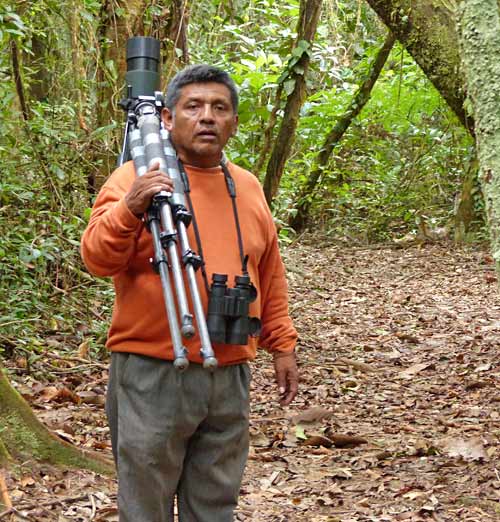 |
|
Ernesto has lived among Jaguars all his
life. Of Mayan descent, he grew up in the area and participated in
research in the early 1980s when researchers put radio collars on Jaguars
to track them and learn more about their longevity, range and food habits.
Ernesto is committed to conservation. We spent three days, one
evening, and two night walks searching. It was thrilling to follow
trails in the park where a Jaguar had walked just before us. |
|
|
|
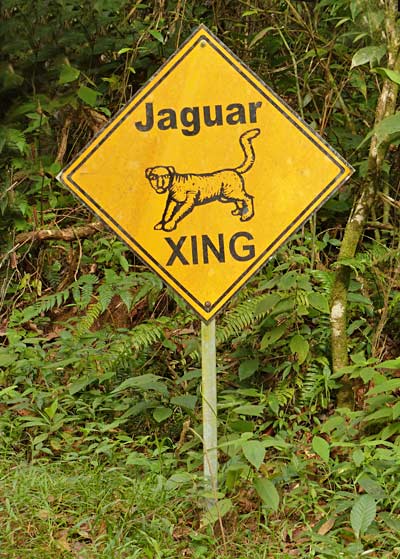 |
|
When you see these
signs on the road, you know you are getting close. |
|
|
|
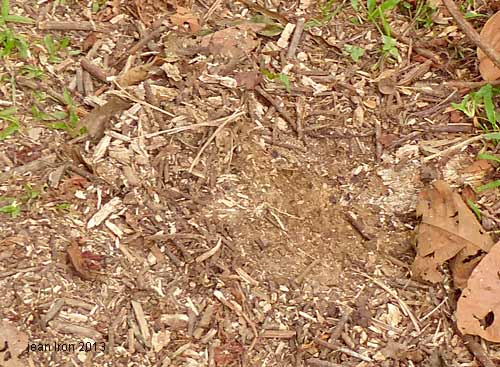 |
|
Above is a very fresh scrape where the
Jaguar scratched the leaves, twigs and wood chips to the side. Jaguars walk the same trails in the
preserve we do and they mark their territory with scrapes, urine
markers, scat and claw marks. This
scrape was on a trail where
Ernesto’s son spotted two Jaguars earlier in the day. From the truck
he saw a small Jaguar cub on the left side of the access road where
a trail crosses, and on the right was the tail end of its mother
disappearing down the trail. The cub crossed the road in front of the
truck and followed the mother. Ernesto and I checked it out later
and found many fresh scrapes and could smell the urine markers. It's
all about being at the right place at the right time. |
|
|
|
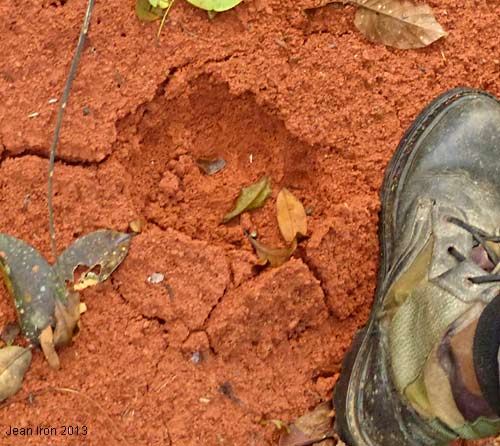 |
|
Fresh Jaguar track in
a leaf-cutter ant nest on the ground. The nest was at least 15-20
metres long, perfect for showing many jaguar tracks. |
|
|
|
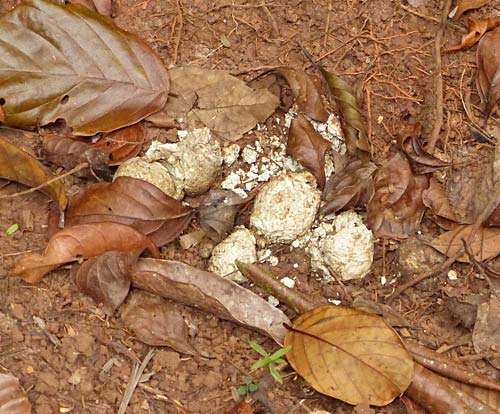 |
|
Jaguar scat, not fresh, possibly 5 to 7
days old. When Jaguars come across old scat they roll in it, play
with it, pat it around and scent mark all over it. One night on a
trail we passed Jaguar scat that we had passed several times before
so we knew it was there. An hour or so later when we came back, the
scat had been rolled away. In its place was the very strong distinct
musky-urine odour letting us know that a Jaguar was close by. |
|
|
|
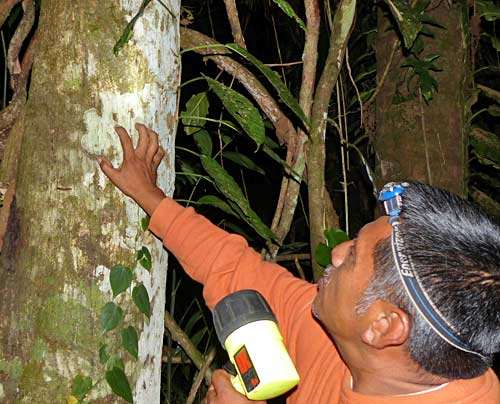 |
|
Ernesto showed me Jaguar claw marks on
the trunk of a tree. These were older, not fresh, and they reminded
me of the way Black Bears leave claw marks on trees that they have
climbed. |
|
|
|
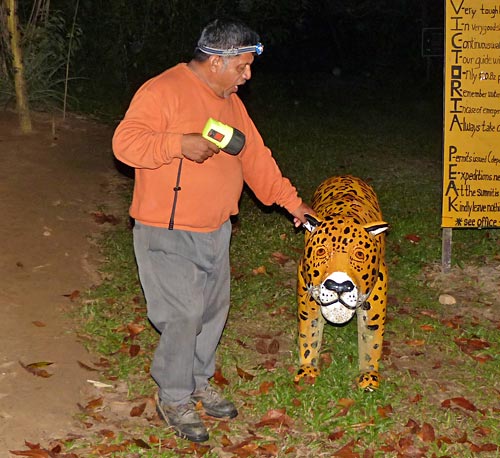 |
|
Searching for Jaguars was exhilarating,
especially at night. Like many animals, they are most active between
dusk and dawn when their main prey, Nine-banded Armadillos, are
moving around. Even though I didn't see a Jaguar, the experience of
walking where they stalk was tingling. I thank Ernesto Saqui for
showing me around Jaguar country and being generous with his
knowledge. |
|
|
|
|
|